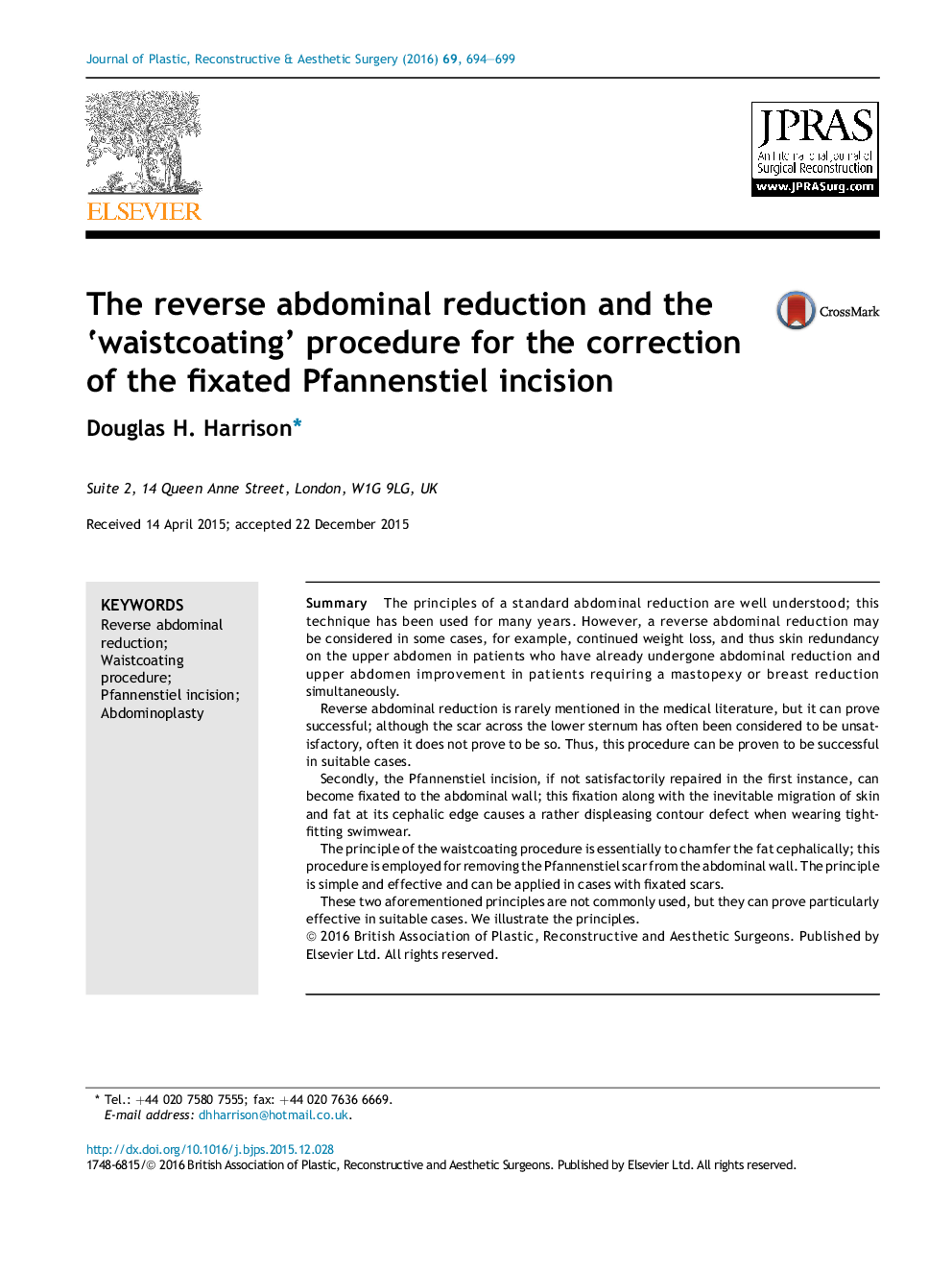| Article ID | Journal | Published Year | Pages | File Type |
|---|---|---|---|---|
| 4117096 | Journal of Plastic, Reconstructive & Aesthetic Surgery | 2016 | 6 Pages |
SummaryThe principles of a standard abdominal reduction are well understood; this technique has been used for many years. However, a reverse abdominal reduction may be considered in some cases, for example, continued weight loss, and thus skin redundancy on the upper abdomen in patients who have already undergone abdominal reduction and upper abdomen improvement in patients requiring a mastopexy or breast reduction simultaneously.Reverse abdominal reduction is rarely mentioned in the medical literature, but it can prove successful; although the scar across the lower sternum has often been considered to be unsatisfactory, often it does not prove to be so. Thus, this procedure can be proven to be successful in suitable cases.Secondly, the Pfannenstiel incision, if not satisfactorily repaired in the first instance, can become fixated to the abdominal wall; this fixation along with the inevitable migration of skin and fat at its cephalic edge causes a rather displeasing contour defect when wearing tight-fitting swimwear.The principle of the waistcoating procedure is essentially to chamfer the fat cephalically; this procedure is employed for removing the Pfannenstiel scar from the abdominal wall. The principle is simple and effective and can be applied in cases with fixated scars.These two aforementioned principles are not commonly used, but they can prove particularly effective in suitable cases. We illustrate the principles.
